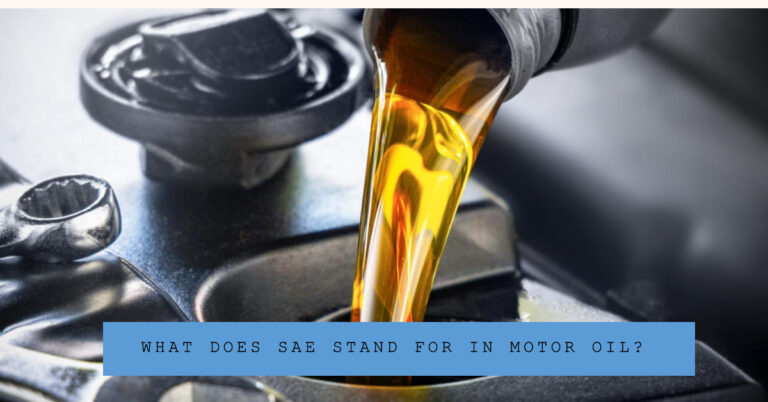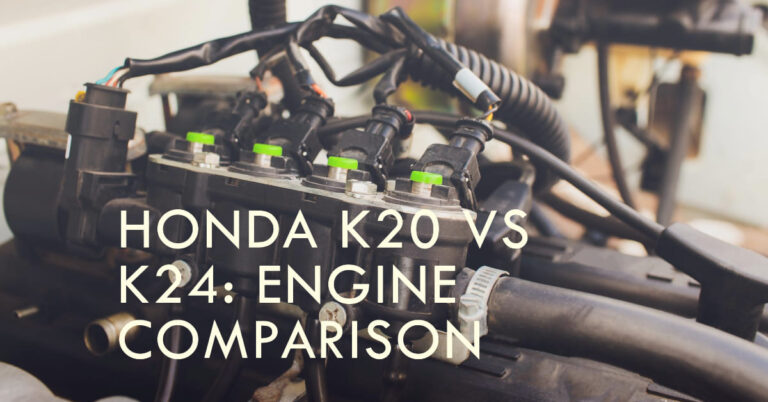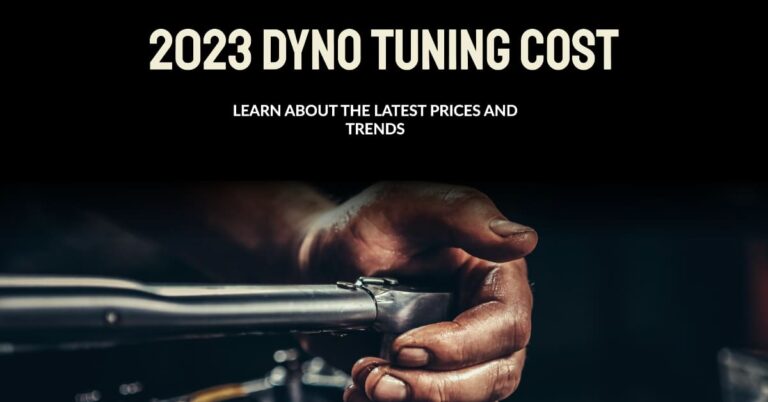Engine Rod Knocking Repair Guide – Costs & Options Explained

Cars are complex machines with hundreds of moving parts, and when one small component fails, it can lead to catastrophic engine damage. One of the most dreaded noises any auto owner will hear is the unmistakable metallic banging sound of engine rod knock.
So what causes rod knock? How much will repairs set you back? And most importantly, can anything be done to prevent engine failure? This in-depth guide has got you covered with all the details on diagnosing and addressing rod knocks to save your engine.
Table of Contents
What Exactly Causes Engine Rod Knocking in the First Place?
The repetitive knocking or rattling noise emanating from the engine bay likely means serious wear and tear on the connecting rod bearings. These small but critical parts connect the piston rods to the engine’s crankshaft, facilitating smooth up and down movement during combustion.
Over thousands of miles, the high pressures inside the cylinder can wear out the rod bearings. Once worn, the bearings lose their tight clearances and begin to rattle audibly as the rod journal connecting to the crankshaft knocks around inside the bearing. Uh oh, that’s not good.
Rod knock happens most commonly due to the following reasons:
- Long periods of low oil levels or diluted oil – The #1 cause! Oil keeps those bearings lubricated and cushioned. Running low compromises that lubrication between the high-speed moving parts.
- Dirt or debris contamination in the oil – Anything that sneaks past the oil filter can grind away at bearings.
- Overheating episodes – Excessive heat damages engine components and oil performance.
- High mileage engines with excessive wear – The more miles, the more worn the bearings become, eventually losing their tight tolerances.
- Aggressive driving and revving – Puts extra stress on the reciprocating rods.
So in summary, rod knocks stem from worn out bearings no longer able to smoothly ride the crankshaft rod journals. Next we’ll cover how to recognize when engine bearings are failing.
Detecting Rod Bearing Failure – What are the Warning Signs of Engine Rod Knock?
The cluing knocking sound is the most telling sign of rod problems, as the name implies. But what exactly should you listen and feel for? And when should you be concerned enough to shut off the engine immediately?
Pay attention for these key symptoms of a bearing failure:
- Metallic knocking or rattling noise from the engine – As the bearings wear, you’ll hear a tinny knocking sound emanating from the engine. It tends to increase in frequency with higher RPMs.
- Oil pressure warning light illuminates – Worn bearings can restrict oil flow through the block, triggering the low pressure warning.
- Knock worsens when engine is cold – Cold, thick oil takes longer to reach and lubricate the rod bearings after startup.
- Vibrations felt through steering wheel and seat – The crank vibrations transmit through the drivetrain as knocking intensifies.
- Loss of power under acceleration – Damaged bearings throw off crank timing, reducing engine output.
- Engine seizing up or stalling – If knocking is allowed to continue, it can lead to catastrophic failure where the rod tears through the block or seizes the crank.
Bottom line – if you detect any odd noises, have it inspected ASAP. The longer damaged bearings are left alone, the more damage occurs internally. When caught early, bearing wear can be corrected cheaply by a simple resize or replacement. But if left unchecked, the repair bill piles up fast.
Now let’s review your repair options once rod knock is diagnosed.
Engine Rod Bearing Repair and Replacement Options
When knocked out rod bearings are detected, you essentially have 3 options – replace just the bearings, rebuild the engine, or replace the whole engine. The best route depends on the extent of damage, vehicle value, and your budget.
1. Replace Connecting Rod Bearings
If the engine internals are still intact and the block isn’t excessively worn, replacing just the worn rod bearings may do the trick. Here’s the general process:
- Remove oil pan and disconnect crank from block
- Remove caps then push connecting rods and pistons up and out
- Extract crankshaft from block
- Inspect journals for damage then resize to fit new bearings
- Install undersized replacement bearings
- Reassemble components with proper clearances
While very labor intensive, a rod bearing job costs far less than a full rebuild if the block and crank are salvageable. Parts may cost $200-300 but the majority of the cost is labor hours.
Cost range for rod bearing replacement: $800 – $1500
2. Full Engine Rebuild
If the crankshaft, cylinder walls, or block surface itself are damaged from the failed bearings, a full engine rebuild will be required. This comprehensive repair involves:
- Disassembling entire engine and cleaning components
- Machining block deck and cylinders
- Grinding crank journals
- Installing new pistons, rings, bearings, gaskets
- Adjusting clearances for proper operation
- Reassembling complete engine
While costly, a rebuild essentially gives you a like-new engine inside your existing block. Expect around 20-40 labor hours for an experienced mechanic to complete a rebuild.
Cost range for engine rebuild: $2000 – $4000+
3. Engine Replacement
In cases where the original engine is extremely worn out anyway, or if a rod failure damaged the block, replacing the entire engine with a used or re-manufactured unit may end up costing less than a rebuild. To swap the engine:
- Remove accessories, exhaust, etc.
- Disconnect engine then lift it out
- Lower replacement engine in and bolt to mounts
- Reconnect all systems
- Refill fluids
There’s significantly less labor than a rebuild, but the engine cost itself is higher. Used engines average $1500-2500 but re-mans with a warranty run $3000-6000. Add another 5-15 hours labor.
Cost range for engine replacement: $3000 – $6000
As you can see, repair costs vary dramatically based on the repair approach. The engine itself matters too – specialty BMW or Audi engines are more expensive to source than common types. Let’s look at other factors impacting overall repair costs.
What Variables Impact Total Rod Knock Repair Costs?
While the repair approach represents the bulk of the expense, there are other considerations that bump the total invoice up or down:
- Extent of damage – Was it caught early before secondary damage occurred internally? Full engine rebuilds cost significantly more than a basic bearing resize job.
- Labor rates – Some shops charge $100+ per hour, others much less. Labor represents a major portion.
- Engine type – Harder to find import engines cost more than popular domestic V8s and 4-cylinders.
- Use of machine shop – Outsourcing machining, cleaning and inspection adds expenses.
- Parts selection – OEM factory parts tend to be pricier than quality aftermarket bearings and rebuild kits.
- Vehicle value – Repairs exceeding a car’s value often steer owners towards replacement.
- ** DIY repairs** – Assuming capability, doing the work yourself substantially lowers cost, but increases time investment.
When reviewing repair estimates, ask questions about the extent of included work, parts sources, and shop rates to enable fair comparisons.
Alright, at this point your engine is likely torn down on the shop bench. Once repaired, proper maintenance is key to avoid repeat rod bearing failure down the road.
Preventing Future Engine Rod Knock – Maintenance and Driving Tips
Rod knocks don’t appear suddenly. The excessive wear happens over tens of thousands of miles before it becomes audible. Here are smart maintenance habits to preserve your bearings:
- Strict oil change schedule – Old oil loses its lubricating properties. Stick religiously to 3-5k mile intervals with quality oil.
- Use thicker oil – Higher viscosity oil like 5W-30 provides more bearing protection than thin 0W-20 oils.
- Upgrade oil filter – A quality filter prevents bearing-damaging particles entering your engine.
- Tune-ups – Replace spark plugs, wires, etc. per the maintenance schedule to maximize engine efficiency.
- Address leaks promptly – Seepage drops oil levels over time. Identify and fix leaks immediately.
- Oil additives – Anti-wear additives provide extra insurance against high wear conditions.
Driving habits matter too:
- Let engine warm up before driving hard
- Accelerate gently when engine is cold
- Don’t lug the engine
- Maintain steady speeds, avoid excessive RPM cycling
- Monitor engine temperature gauge
- Don’t redline excessively
Your rod bearings endure incredible pressures and heat while running thousands of RPMs. Keeping your oil clean and changed regularly gives your engine the best odds of going the distance without knocking out on you.
Conclusion
Rod knocks indicate seriously worn bearings requiring prompt attention. Catching it early while engine damage is limited keeps costs down. Here are the key takeaways from this guide:
- Don’t ignore odd engine noises – have it inspected right away. The quicker you shut it down, the less harm done.
- Weigh the repair costs against the vehicle value – expensive rebuilds on high-mileage cars may not be worth it.
- Used engines offer cost savings over rebuilds, but inspect quality and warranty coverage first.
- For simpler jobs like bearing replacement, capable DIYers can save substantially in labor costs. But engine rebuilds and swaps require expert skill.
- Shop around for quotes – costs vary between mechanics based on labor rates, parts sources, machine shop access and other factors.
- Don’t defer maintenance if you want your engine to stay knock-free. Stick religiously to oil changes, tune-ups, and monitoring temps.
With some luck and diligent care, your engine should deliver hundreds of thousands of knock-free miles. But if you do hear that telltale knocking sound, use the guidance in this post to make the smartest repair decision and budget for the fix. Here’s to smooth driving ahead!







